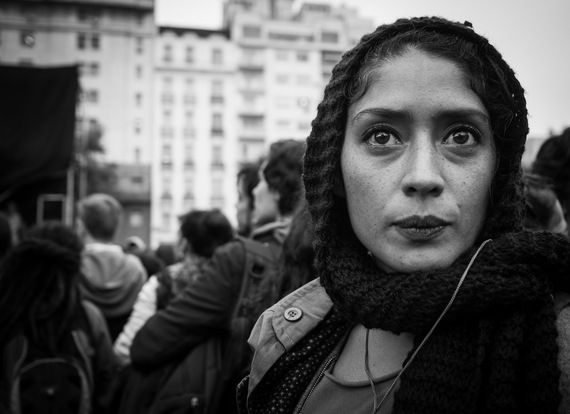There's a reason that Leonardo da Vinci's Mona Lisa is one of the most famous and intriguing paintings of all time. It's not because she has the perfect face but because of the story behind the face -- a story that exists only in our imaginations. Such is the case with this photo by Nicolas Alejandro of Buenos Aires.
You could get lost in those eyes. Who is she? Why did she turn around? What is she thinking about at this precise moment?
Nicolas used a moderately wide-angle lens to snap this image, which means he was right up on her when she turned around. By closing the distance to his subject, he made the photo that much more personal -- for him and for us. This is what the best street photographers do. They get into that awkward, personal space.
If Nicolas had been standing five feet farther back, she would have just been a woman in the crowd, instead of this mystery that cries out to be unraveled.
I asked Nicolas if he knew the woman and he told me that like all of his subjects, she was a stranger. When he takes their pictures, he never asks for permission. That would defeat the purpose of trying to capture the moment. For many street photographers, it's better to ask forgiveness than permission.
"If the person realizes they were photographed and they don't want to be photographed -- no problem. I delete it," Nicolas told me. "In most cases, people will let you keep the photograph."
Nicolas' Flickr stream is filled with these wonderful moments, many of them in and around Buenos Aires' Retiro Train Station. He published a collection of the photos in his e-book, "Passenger Train."
The pictures are even more amazing when you consider that Nicolas has only been interested in photography for two years. He says he's drawn to street photography because "you never know what you are getting when you walk through the streets."
He uses my favorite street camera, the Olympus OM-D E-M5, on his jaunts around Buenos Aires. It's a terrific camera -- the resolution in his photos are stunning.
But a camera is just a tool that is, arguably, the least important factor in making a great image. Light, composition, point of view and movement are the tools that are important, Nicolas says.
For him, it's the unexpected thrill of capturing the perfect moment that matters. It's the uncertainty.
"Every day is a new challenge," Nicolas writes in the introduction to his book. "When you think you [got] your best shot, the next day, you get better."

